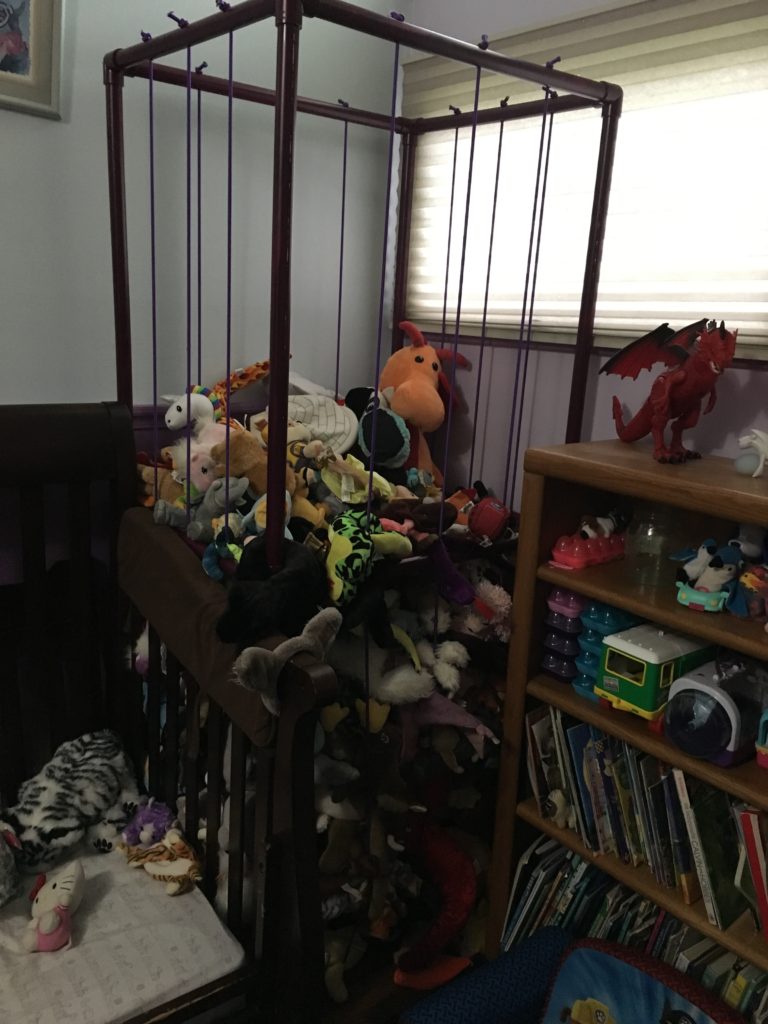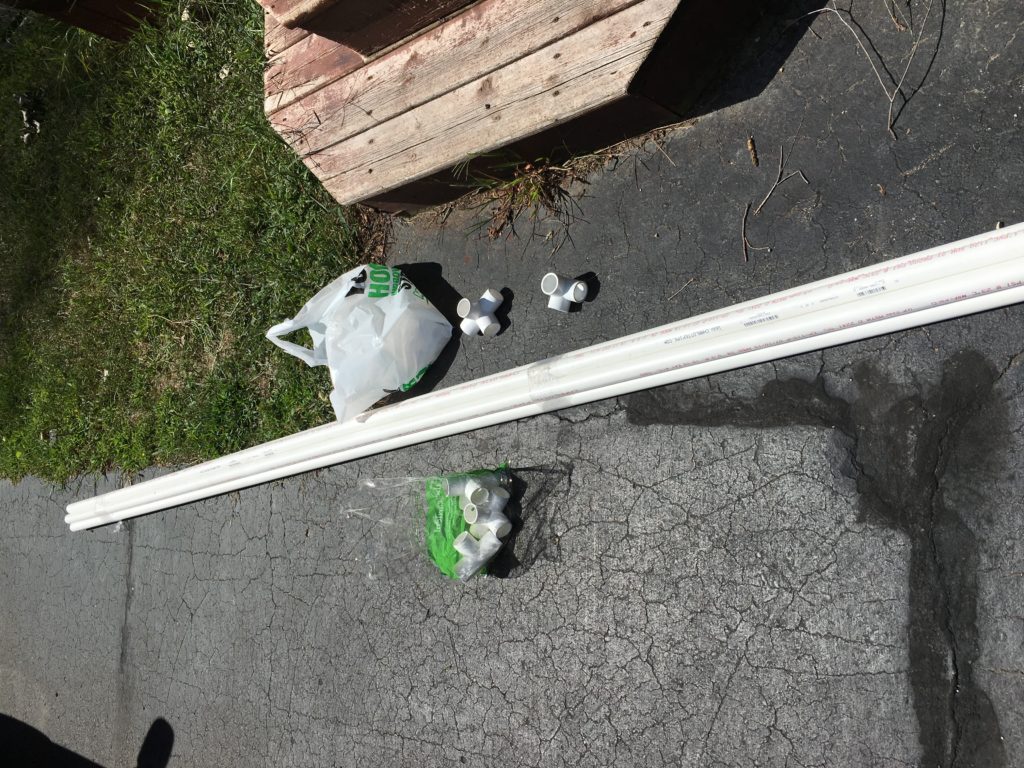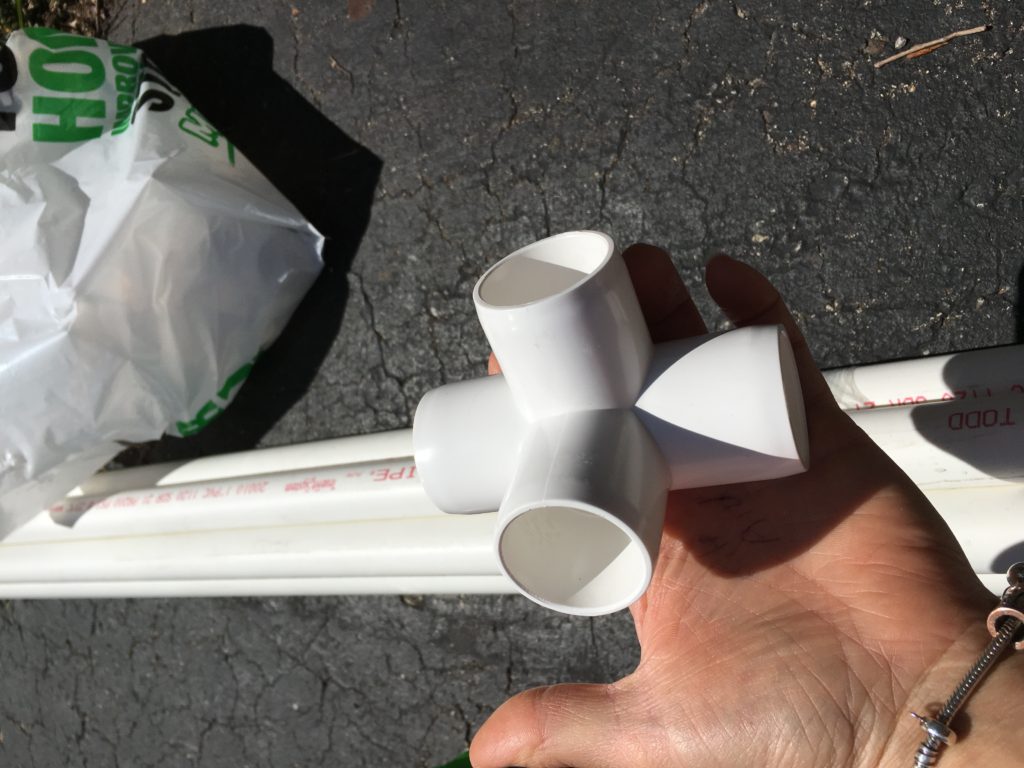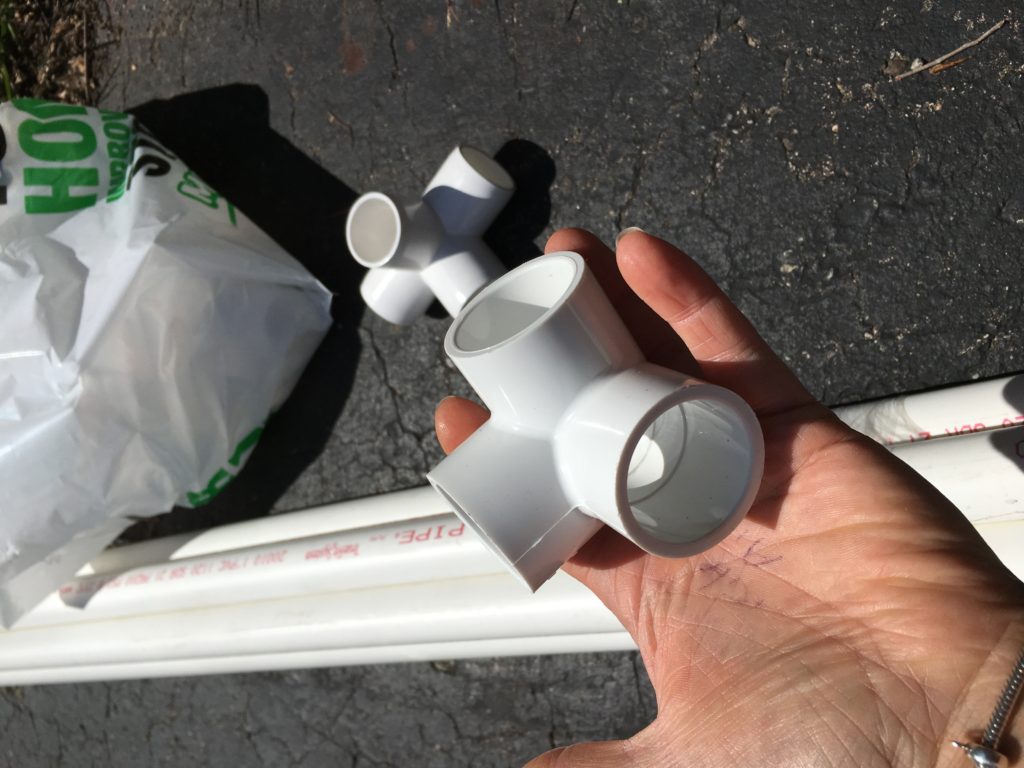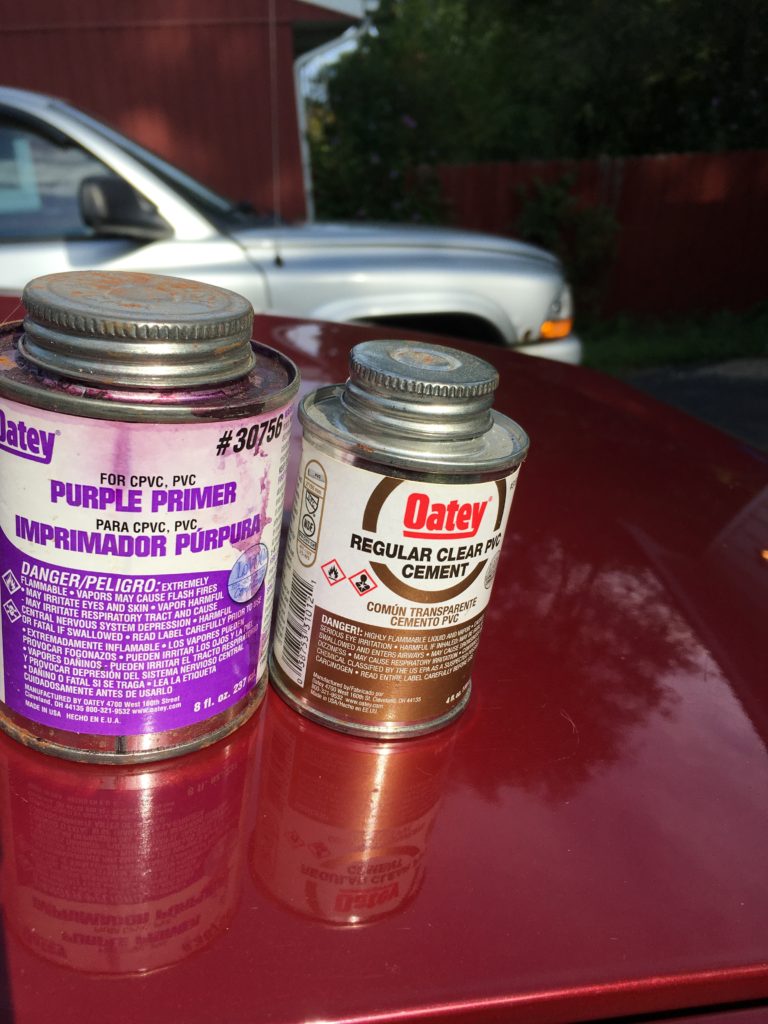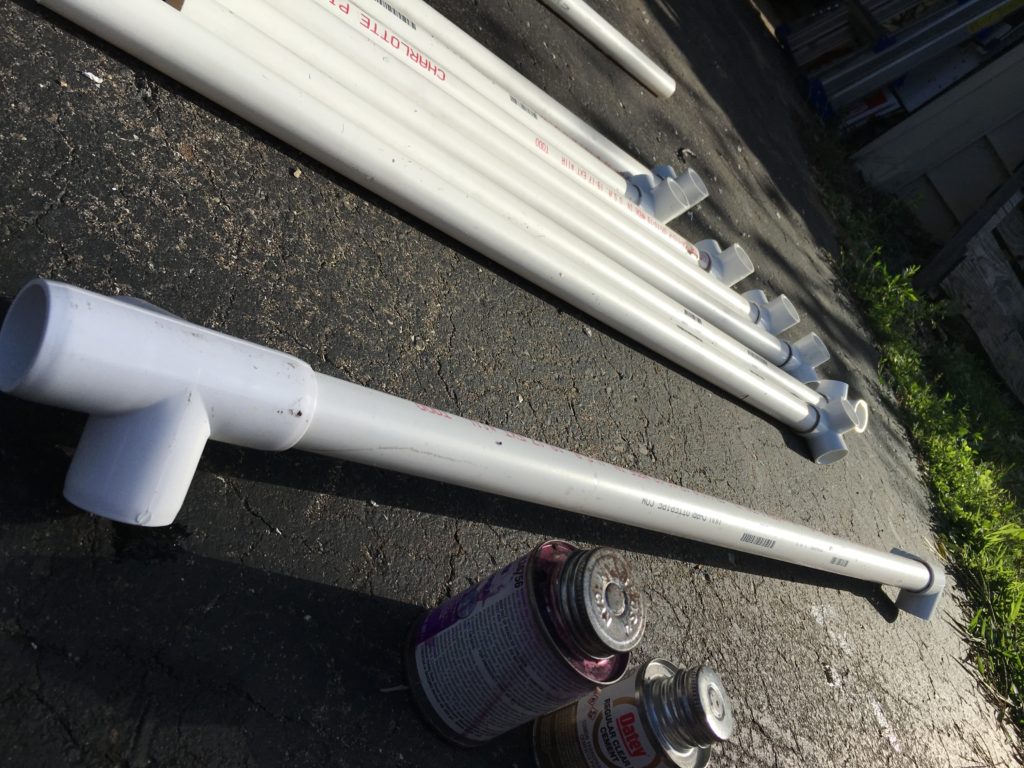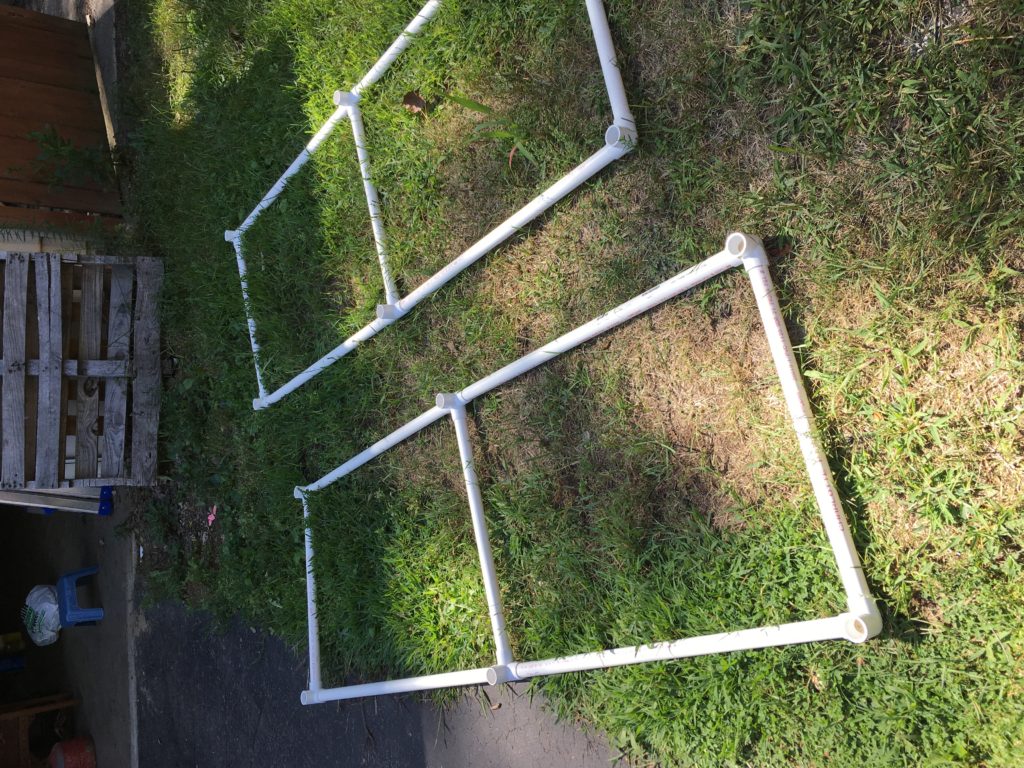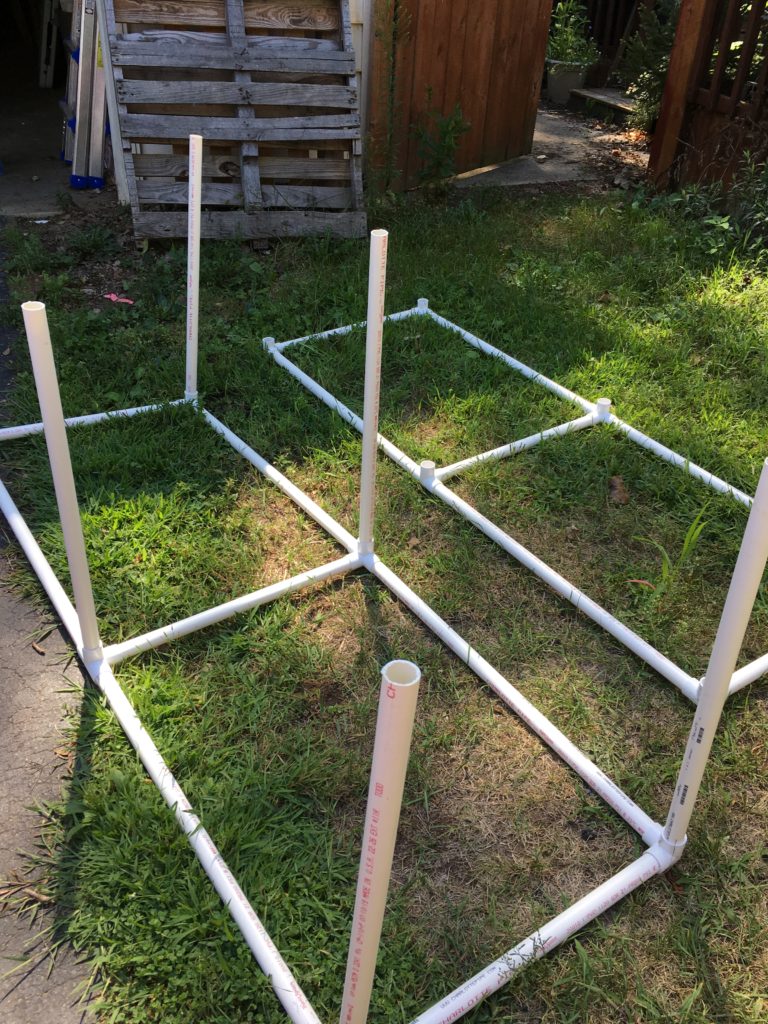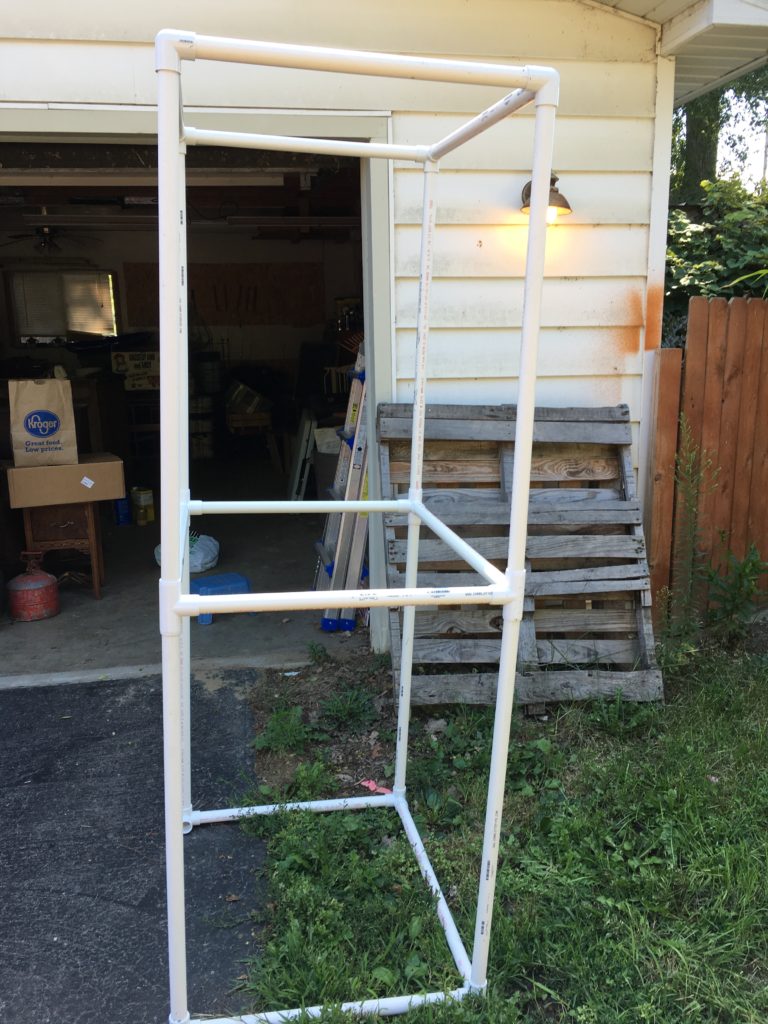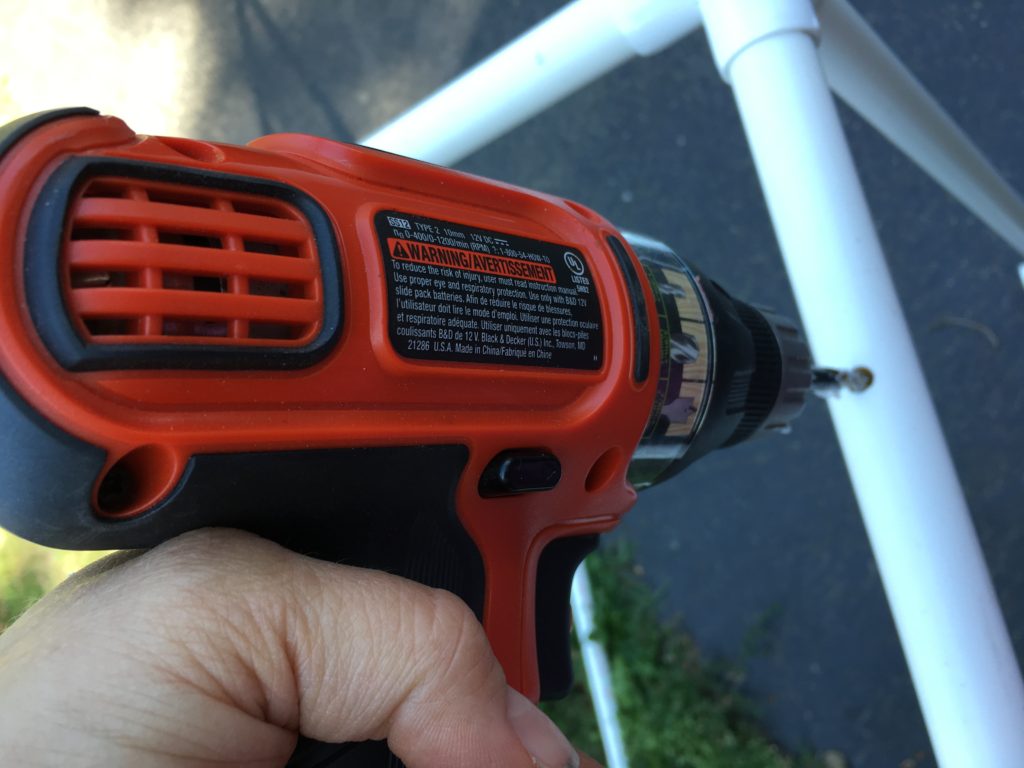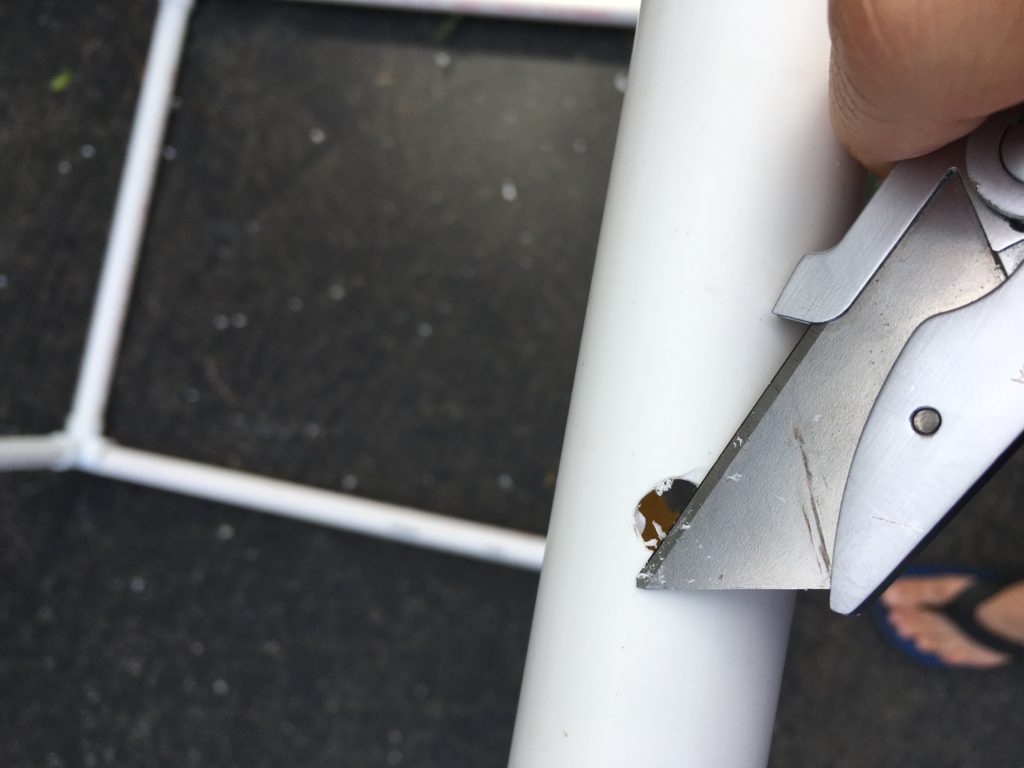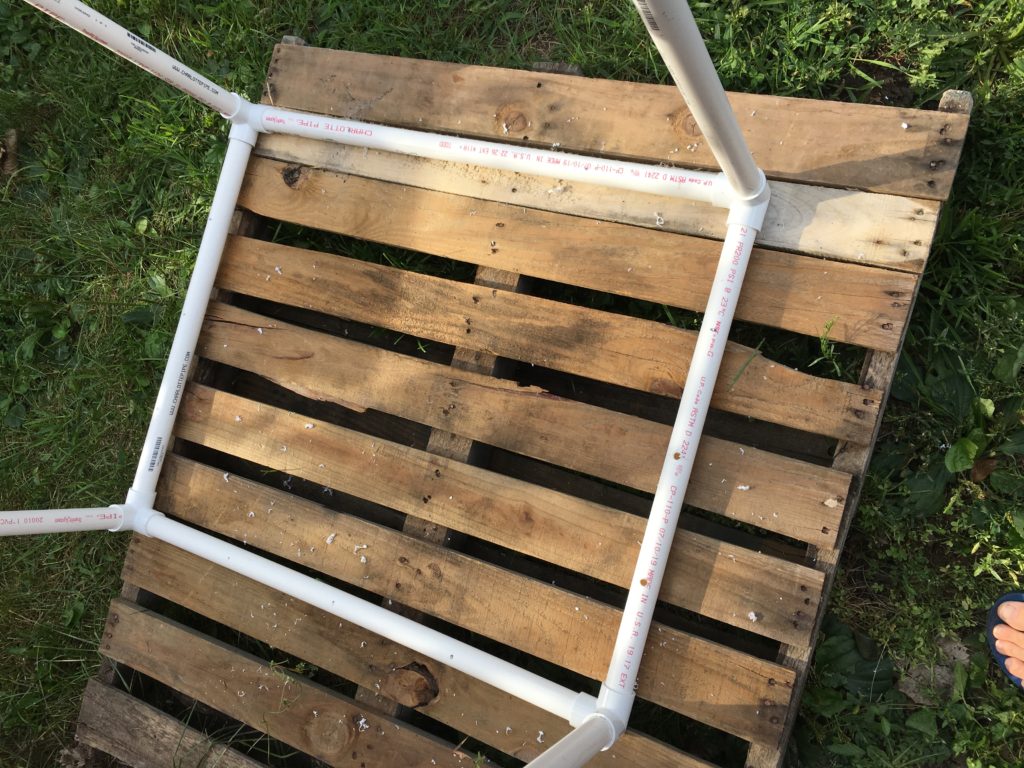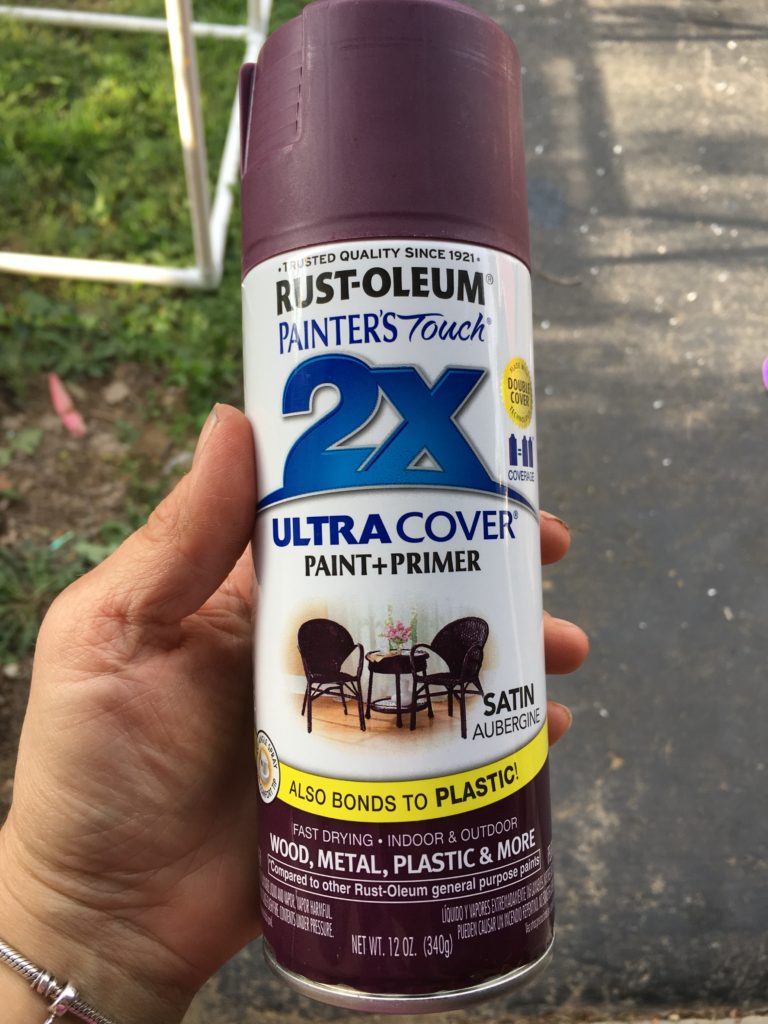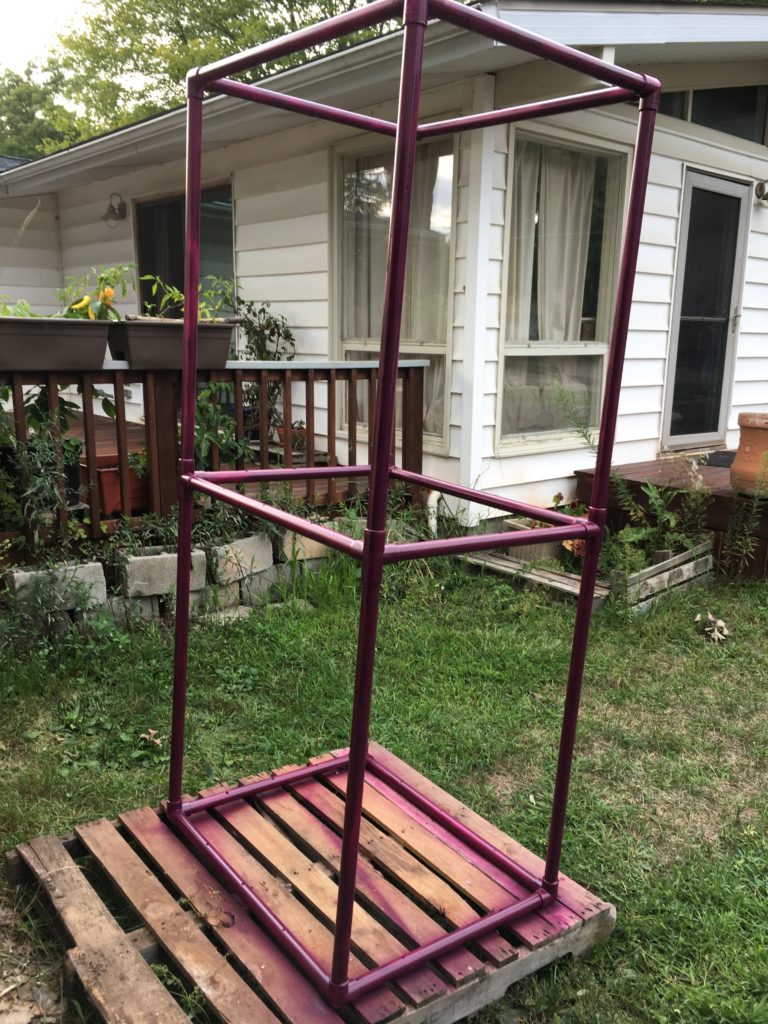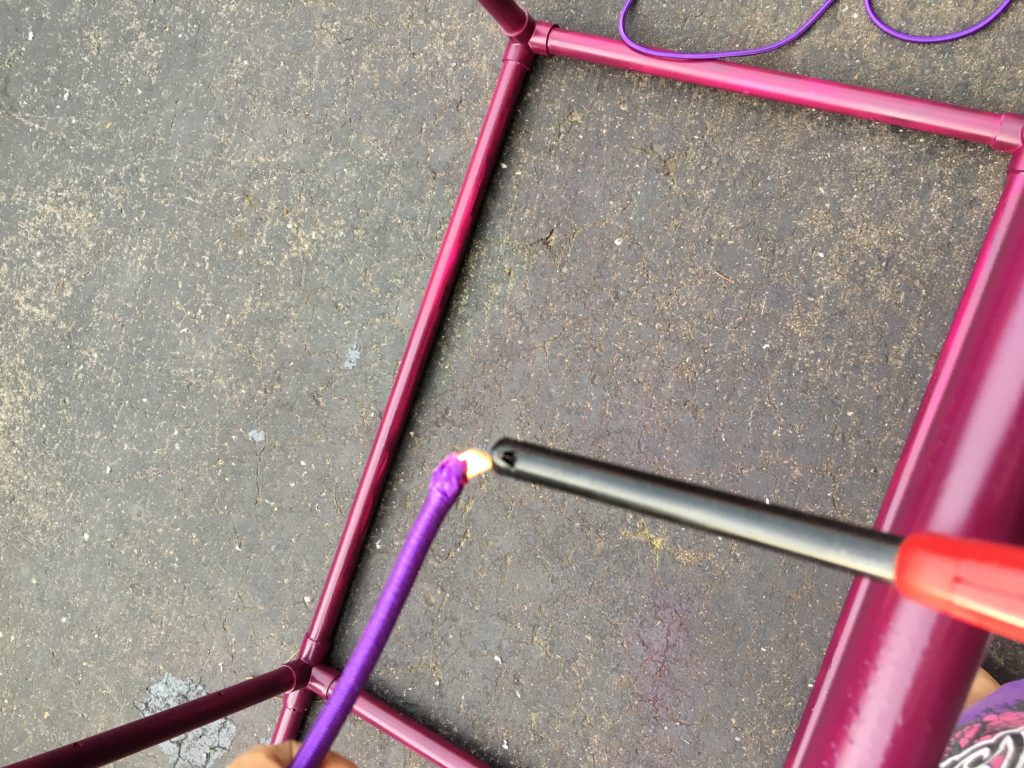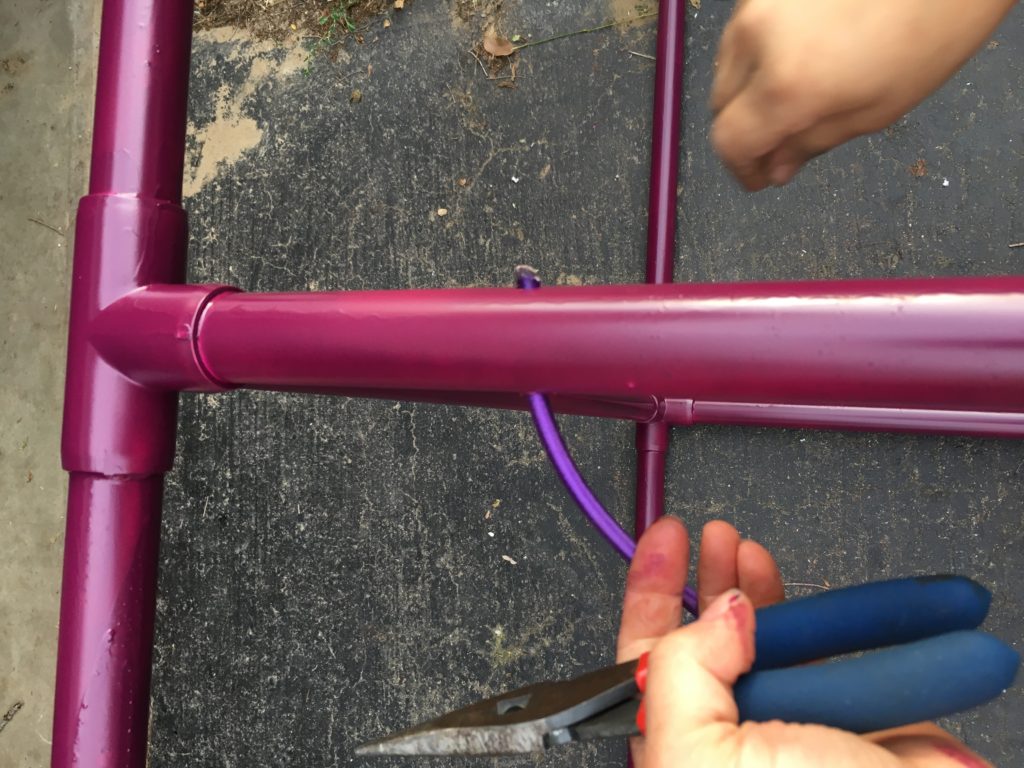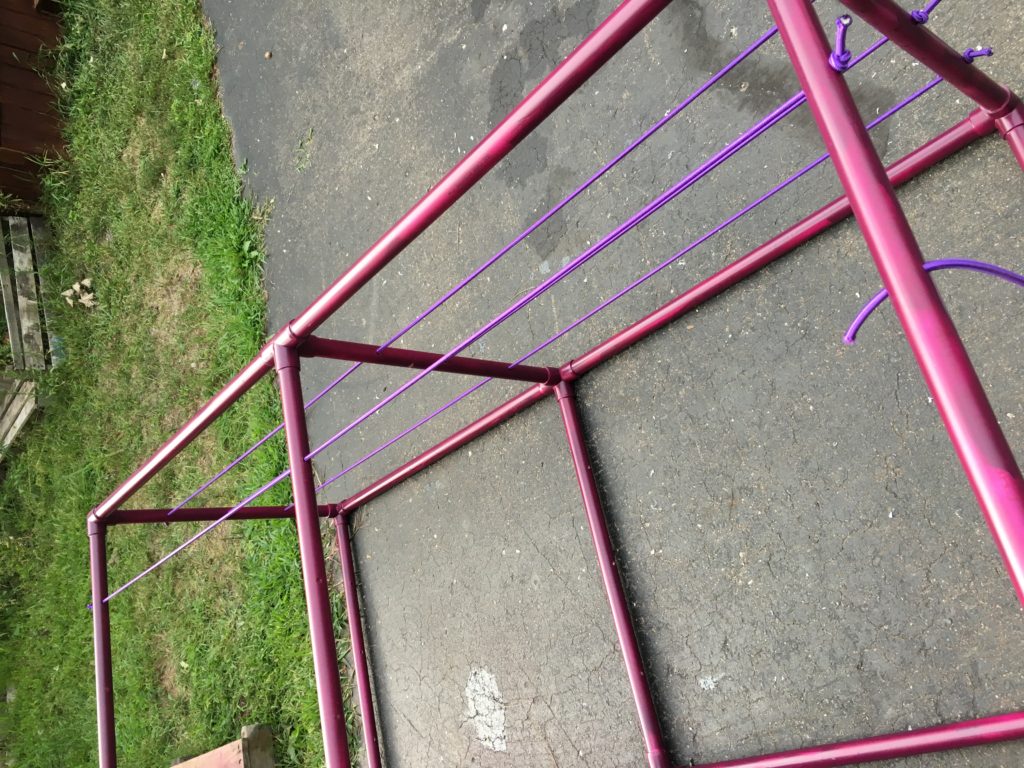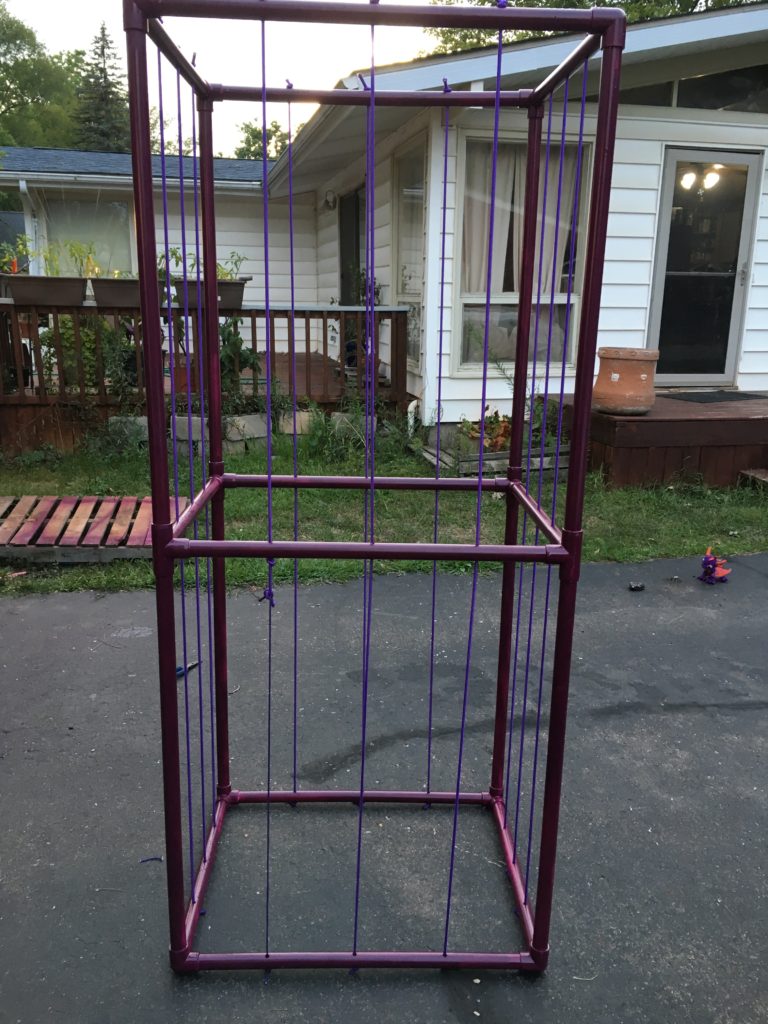This morning, as I watched my cats joyously scratching on their post, I realized that these posts were LONG overdue for refurbishing.
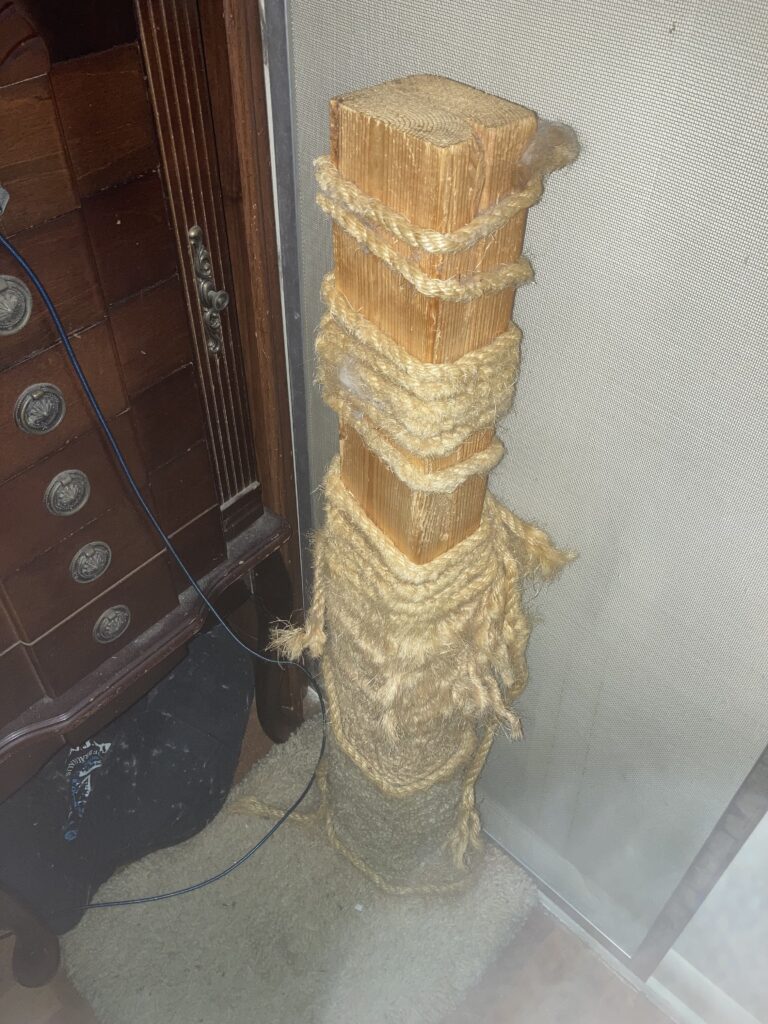
The smaller, more simpler of our scratching posts has been around through ages, surviving many cats. I replaced the sisal rope about 10 or so years ago, at least. It has absolutely seen better days. My cats absolutely destroyed it. But, alas, it has more life to give!
I started with a quick trip to Menards for replacement sisal. I bought 100 feet of the cheapest sisal rope I could find.I was careful not get anything too thin as it wouldn’t last long, nor too thick as it would be more difficult to work with.

After selecting a good rope (1/2 inch thick x 100 feet, as I used it on 2 posts), I got to work removing the old wrapping. I used my handy-dandy box cutter to cut off all but the bottom few inches of rope, as that section was seldom used by my cats and still seemed in fair condition.
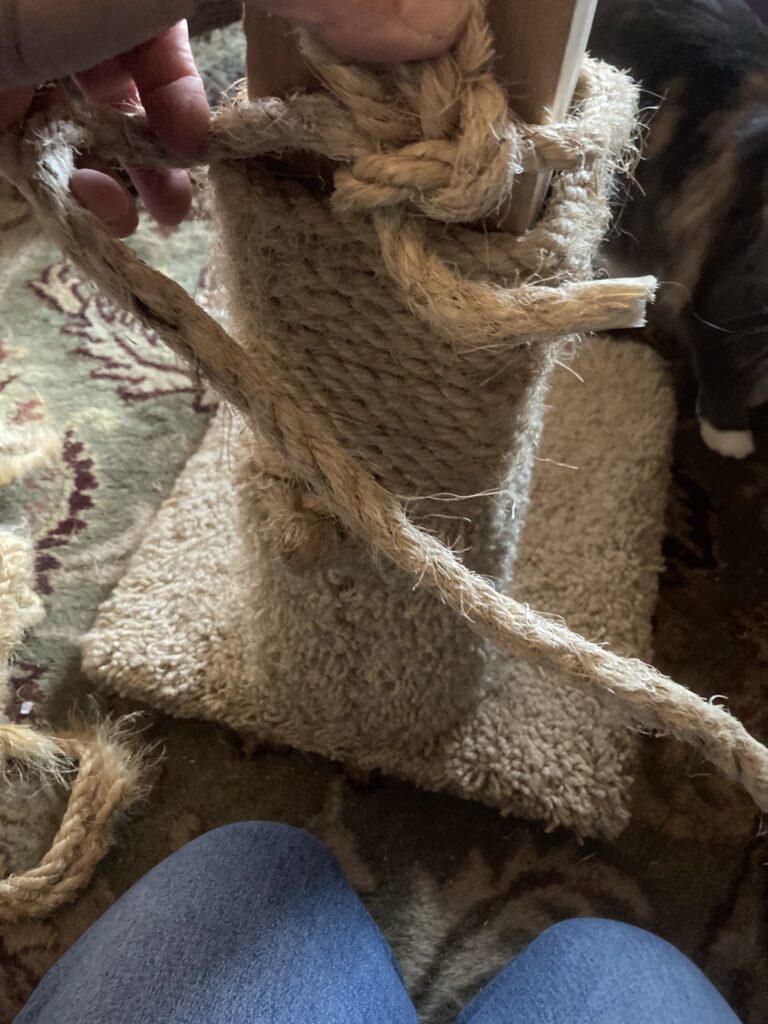
I tied the end of the new rope to the end of the good section of old, and then wound the rope around and around the post, keeping it nice and taught so the pieces don’t overlap each other. Keep the coils nice and tight, and push them against each other tightly so they make a nice mat for the cat to scratch on.

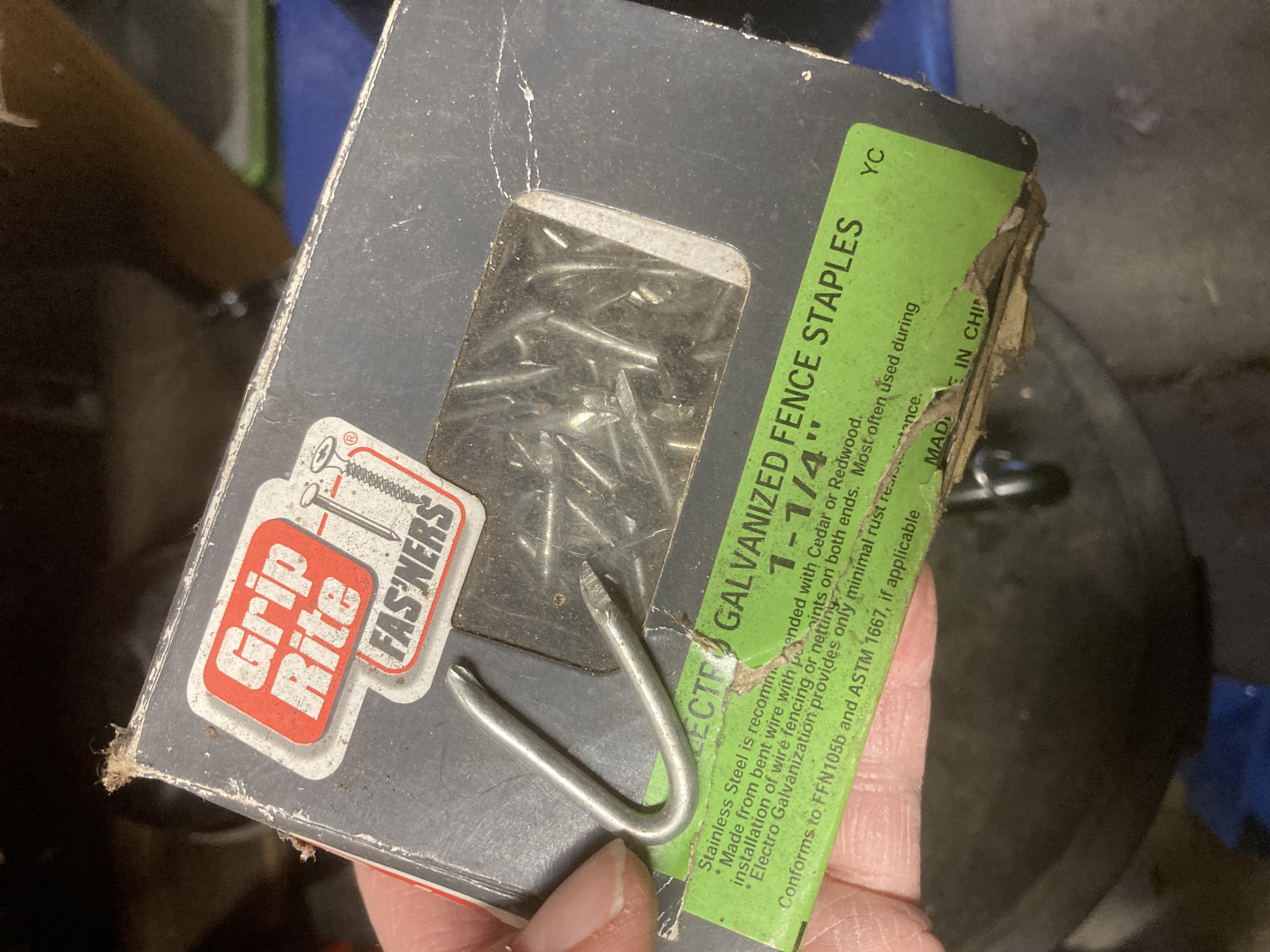
If you have a simple post like mine, don’t bring the rope coils totally flush with the top. I kept mine about an inch down to prevent my cats from pulling the topmost coil up over the top of the post and unraveling it all.
Keeping the rope tight, hammer in one of these awesome fence staples so it holds the rope tight to the post. Hammer it in good and secure so the cats can’t pull it out–give it a good tug to make sure it is really in there! After the nail is in, you can tie a knot in the rope on the other side of the nail and cut the loose end of the rope. The knot will help keep the end of the rope from sliding through the nail staple.
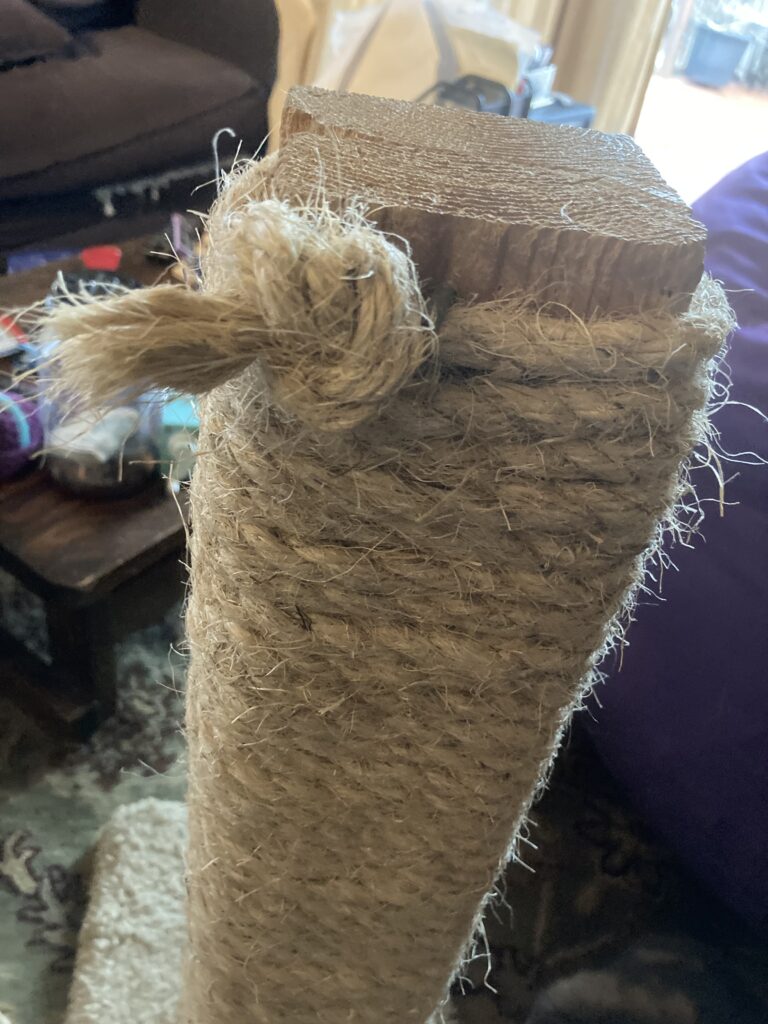
That’s one post done. The cats were scratching at it before I was even done wrapping the coils!

My second scratching post was just awful! I hadn’t realized all of the damage they had done to the rope, as it was turned away from view. First I had to remove the old rope, as before. I removed all but the bottom few inches. This post was trickier as it has the platforms to work around. I ended up cutting the old rope as close as I could to the platforms, but a few strands were stuck where the post and platform connect so I just cut them close to the post, as the new rope covered up the tiny fragments of old.
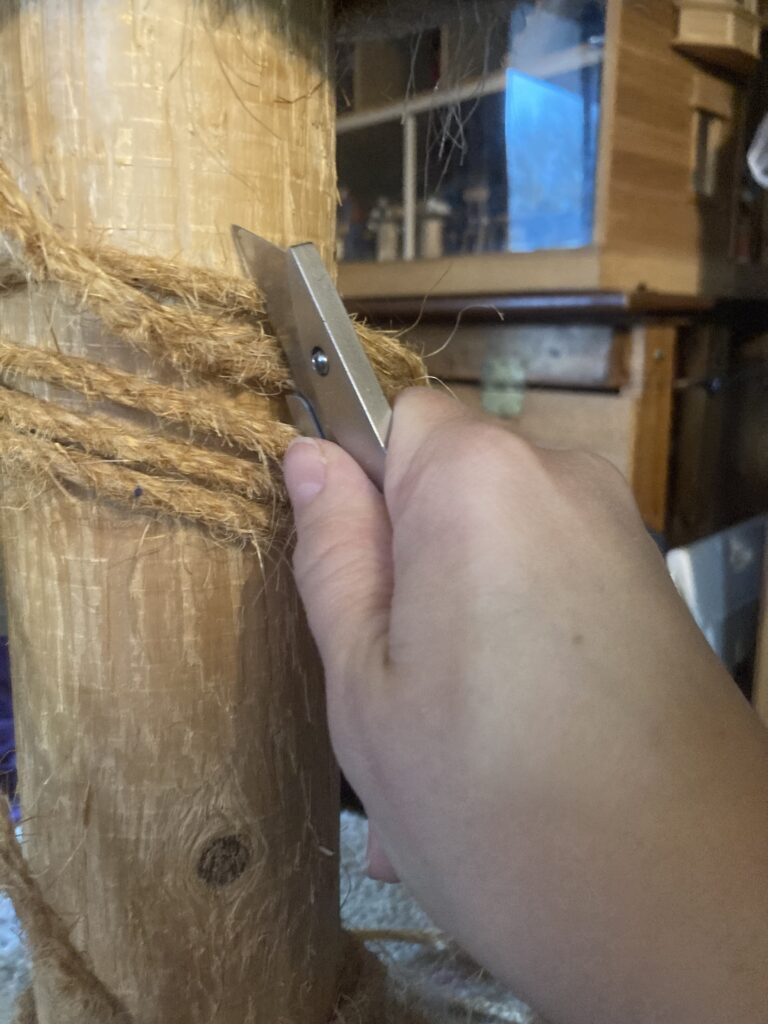
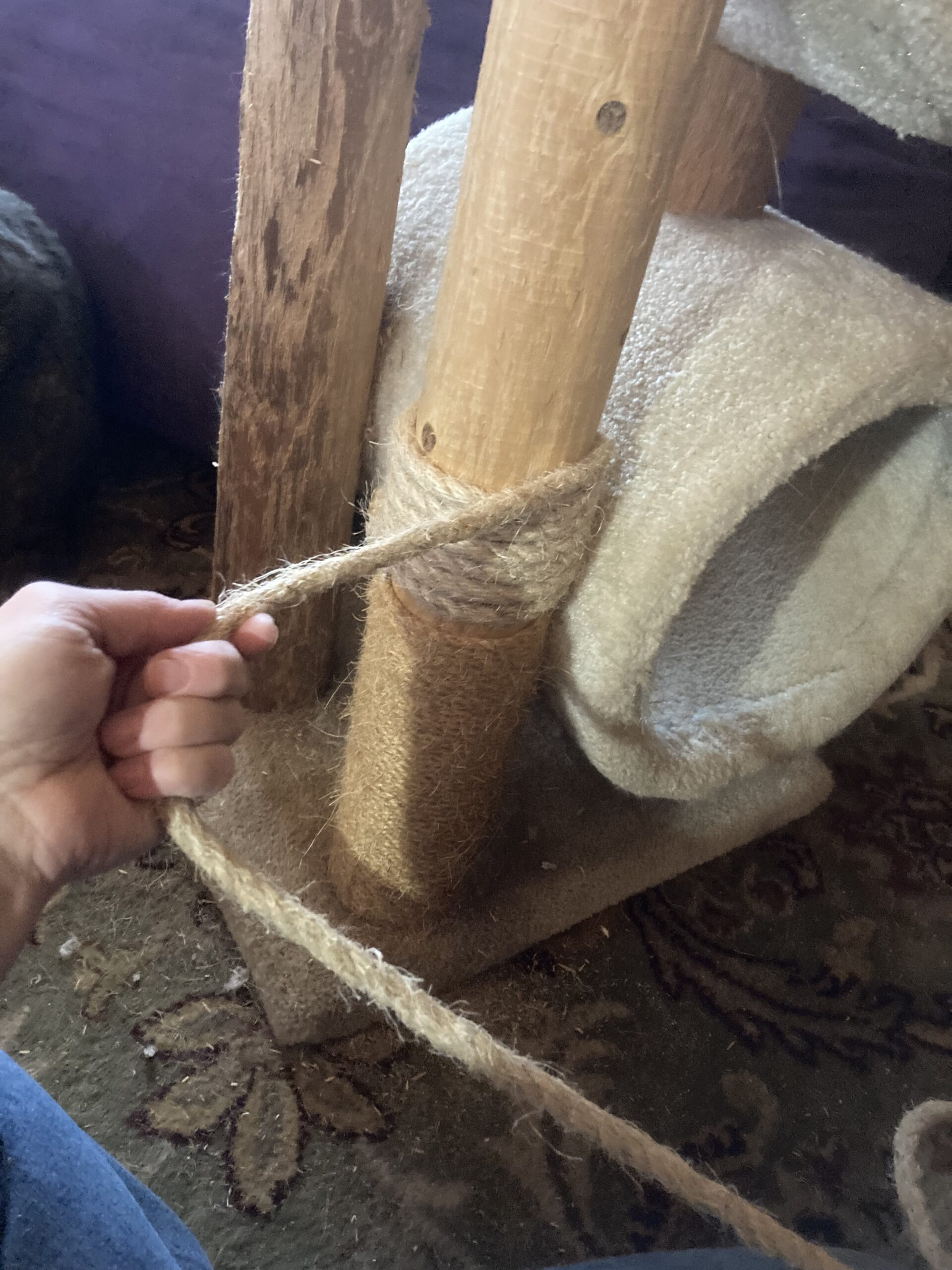
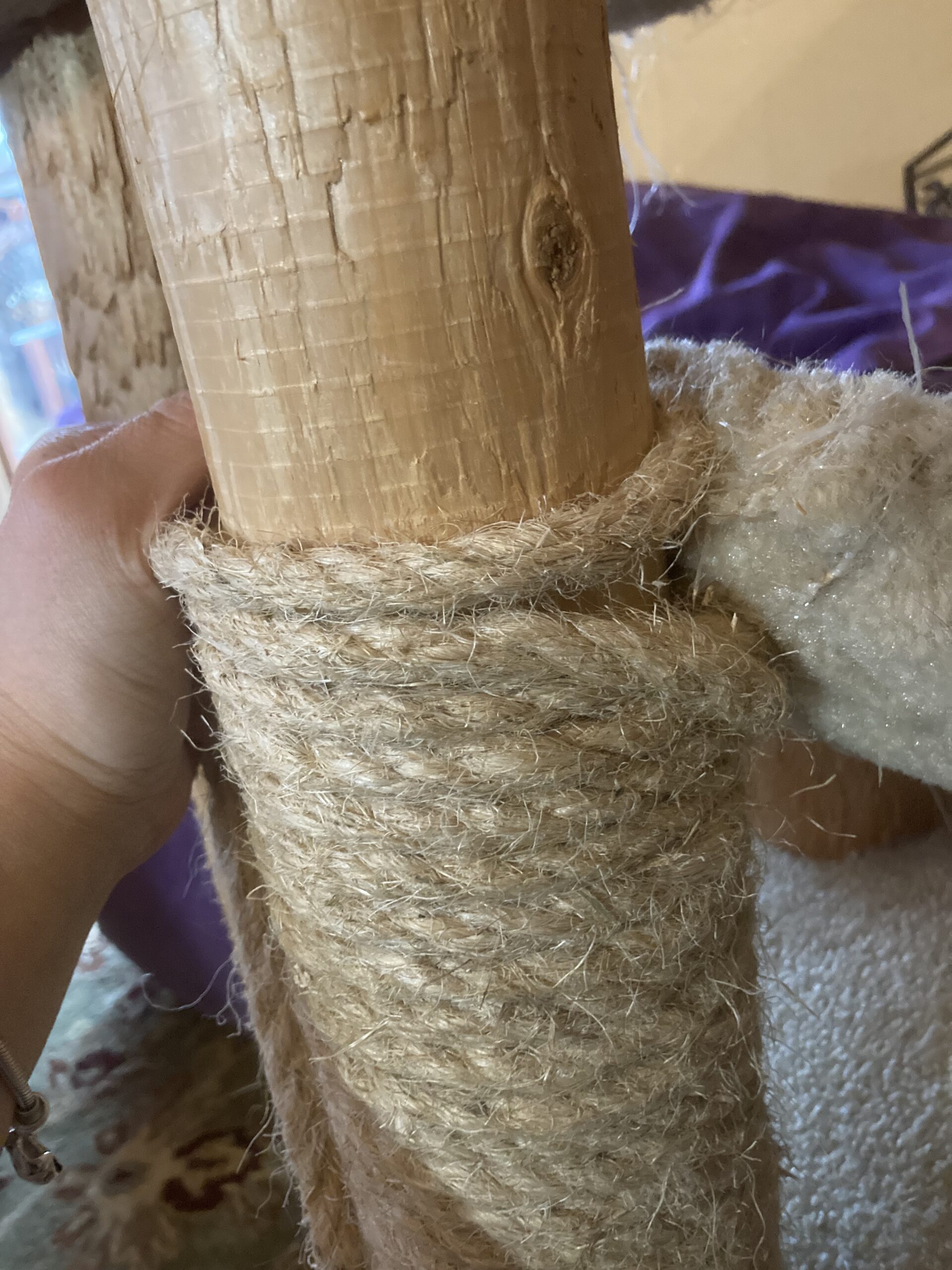


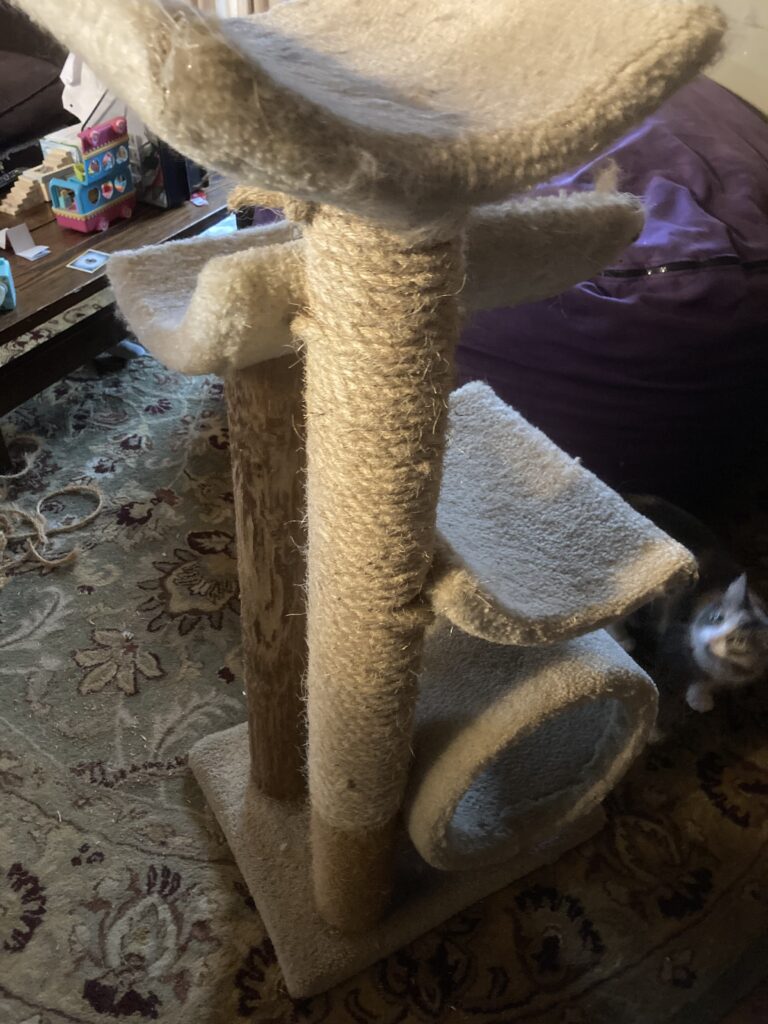
I hope this article gives a better idea of how to recover different types of cat scratchers. My cats were very grateful and excited to have their posts repaired. Any questions or comments? Feel free to post in the comment section!

